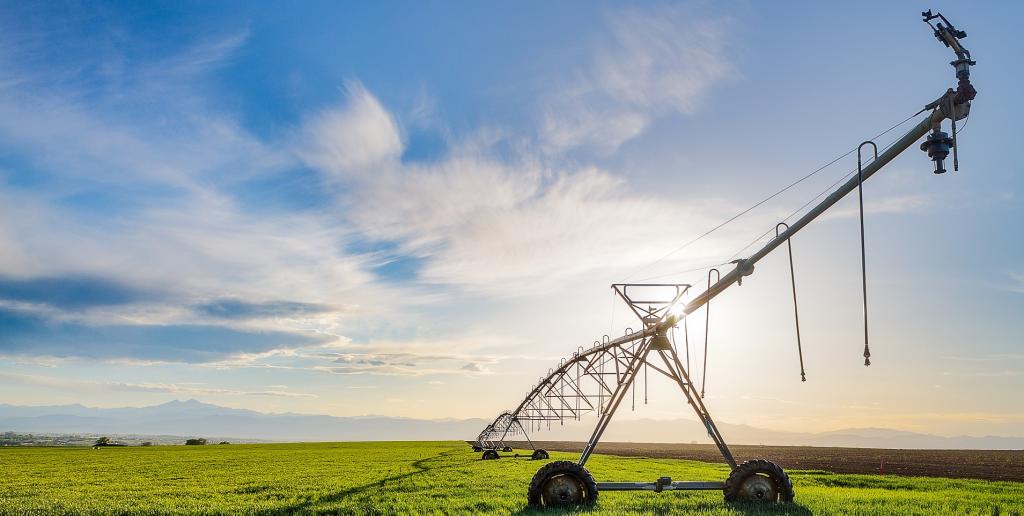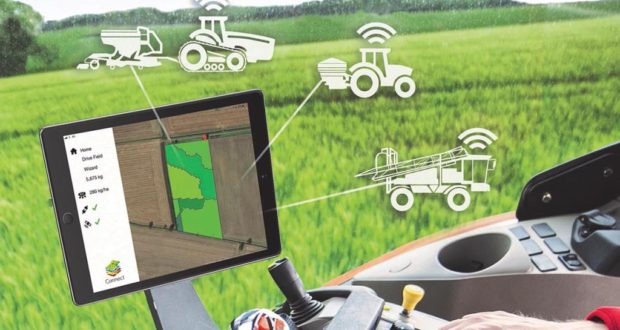The adoption and success of Precision Agriculture in India will depend on whether adoption strategies are designed properly or not.
A planned number of experiments and analyses are required before application of PA to Indian agriculture.There are three steps to enter the PA age: namely, present stage, intermediate stage and future stage. The present stage involves uniform crop and soil management, development of specialist manpower and institution for PA, and popularization of PA concept by mass media communication,seminar, workshop, etc. The intermediate stage will follow stratified random sampling within zone, delineation of management zone throughout the country, and validation of computer models with zone-specific data. The future stage will involve fine grid sampling and sensing,application of zone-specific computer model to simulate the agronomic input conditions and precise sensing and management.

Status of Precision Agriculture in India
Application of PA technologies is presently at the nascent stage in India. Some discrete initiatives have been started towards the application of this technology. PA has been identified as one of the main thrust areas by the Working Groups (WGs) of India–US Knowledge Initiative on Agriculture (KIA). It is expected that PA research will be an important part of the recently launched ambitious agricultural research program, National Agricultural Innovation Project (NAIP), which will focus on innovations in agricultural technology with the announced budget of US$ 285 million.
Development of specialized centers and scientific data bank is a well-known pre-requisite for PA. The PA technology is started to be developed and disseminated in a regionally differentiated manner through 17 Precision Farming Development Centers (PFDCs) located in different parts of India. PFDCs are working for the popularization of PA and hi-tech applications to achieve increased production in addition to imparting training to a large number of farmers. But all these PFDCs mainly concentrate on precision irrigation water management. As an example of collaborative effort of private and Govt. agencies,a new precision farming center has been established by MSSRF (M.S. Swaminathan Research Foundation – anon-profit trust) at Kannivadi in Tamil Nadu with financial support from the National Bank for Agriculture and Rural Development (NABARD). This Precision Farming Centre receives the help of Arava R&D Centre of Israel and works with an objective of poverty alleviation by applying PA technologies.
To explore the potential of application of IT in the agro sector, Tata Chemicals Ltd., a private sector, has been started with an objective of providing the farmers with infrastructure support, operational support, coordination and control of farming activities and strategic support. Tata Kisan Kendra has been replicated successfully in the states of Uttar Pradesh, Haryana and Punjab. The project has been claimed to be scalable and replicable. Private sectors such as Indian Tobacco Company (ITC) have established ‘e-choupals’, which are village internet kiosks that enable access to information on weather, market prices and scientific farm practices, crop disease forecasting system and expert crop advice system. Nearly 1200 ‘e-choupals’ have already been developed across four states of India. Region-specific and crop-specific (such as soybean,coffee, wheat, pulses, and rice) ‘e-choupals’ are under development to provide more specific information to the poor farmers of all remote areas of the country.A good amount of research has been initiated on plant need-based real-time N management for rice. LCC is becoming an effective low-technology PA tool for the need-based N management of rice grown in small farms of India. In 107 on-farm experiments conducted on rice,the average yield recorded in LCC-based real-time N management and that obtained by following farmer’s practice were identical. On average, about 40 kg N ha-1 less fertilizer was applied following the need-based fertilizer management as compared with the farmer’s practice. In 48 on-farm experiments conducted at different locations in north-western India, LCC-based N management was tested on rice varieties commonly grown by small farmers. Savings of 16–43 kg N ha-1 were observed for seven different rice cultivars by applying N using LCC rather than by following the farmer’s practice. The popularity of LCC for rice grown in small farms has been documented in many literatures.


Scope of Precision Agriculture in India
PA can be classified into two categories: namely, ‘soft’and ‘hard’. It can be commented that balanced use of soft and hard PA will be the deciding factor for its success in India. Land fragmentation is considered to be the main obstacle for large-scale agricultural mechanization in India. But these fragmented lands are cultivated in a family responsibility system, and all small farmers have been following consciously or unconsciously ‘soft’ PA technology for centuries. Presently, India is producing more than 200 Mt of food grain which makes India self-sufficient in food production. But only quantity cannot meet the need of the globalized agricultural market. Excellent quality as well as high productivity will be the key factor to compete with others, and the huge scope of PA lies here.In production, India holds world-ranks within 10 in most of the crops (wheat-2nd, rice-2nd, pulses-1st, cotton-4th,etc.). However, in the productivity of these crops, the world ranking varies from 32 (wheat) to 118 (Cotton). Poor scale of mechanization with very small average holding size(1.41 ha in 1995–96) with other reasons augmented the problem. The overall fertilizer consumption rate of India is small (106.5 kg ha-1of agricultural land) in comparison with that of other countries (such as China 271 kg ha-1,Egypt 359.8 kg ha-1, and Netherlands 500.5 kg ha-1).Studies have already shown that systematic soil testing followed by proper application of NPK fertilizers can increase the productivity level by 2–3 times in most of the states of India. However, high cost of traditional soil sampling is one reason for this improper application of fertilizer.Therefore, in these states cheap dynamic soil sampling technology as well as nutrient status analysis on a large scale by RS and GIS can do a lot of improvement.Again, some states such as Punjab and Haryana have experienced large-scale mechanization as well as high doses of fertilizers and pesticides. For example, the state of Punjab has 1.5% of the total geographical area of India, but uses 1.41 million tonnes (nearly 7% of all India fertilizer consumption) of NPK fertilizer along with 60% of herbicides used in India. Over exploitation of land and excessive use of agricultural input are typical problems of these areas. The signs of tiredness in the natural resources are already visible, which is the reason for stern concern of the policy-makers and planners. These areas are more or less suitable for ‘hard’ PA.
Strategy for adoption of PA India
Future strategy for the adoption of PA in India should consider the problems of land fragmentation, lack of highly sophisticated technical centers for PA, specific software for PA and poor economic condition of general Indian farmers.Strategically proportioning back up from the public and private sectors is essential to promote its rapid adoption. Another possibility of the introduction of PA in small farms is that individual farms will be treated as management zones within a field, and that some centralized entities will provide information to the individual farmers on a cooperative basis. The problem of high cost of positioning system for small fields can be solved by the ‘dead reckoning system’. The dead reckoning system, suitable for small regularly shaped fields, relies on in-field markers,such as foam, to maintain consistent application.Research, development and subsequent popularization of inexpensive electronic gadgets, which can increase the profit of small farmers, can be instrumental in preparing the platform of PA adoption by softening the farmer’s attitude towards modern technologies. Some examples are given as follows: digital throttle gear optimizer (DTGO)for better fuel economy of tractors can be an attractive and inexpensive solution for farmers. A digital slipmeter has been developed, which can help to operate the tractor in the most productive slip zone and can be a popular choice of farmers.
The basic goal of PA to optimize yield with minimum input and reduced environmental pollution is highly required for developing countries to face the challenge of sustainability, even if it is used in a different form from that available in Europe or North America. Rapid socio-economic changes in some developing countries are creating new scopes for the application of PA. The implications of dramatic shifts for economic development, poverty reduction and energy consumption, and urbanization in some developing countries are immense. Application of the balanced soft and hard PA technologies based on the need of specific socio-economic condition of a country will make PA suitable not only for developed countries but also for developing countries and can work as a tool to reduce the gap between the developed world and the rest.
Rajeswari Das
PhD Scholar, Department of Soil Science, Dr. Rajendra Prasad Central Agricultural University, Pusa, Samastipur, Bihar

